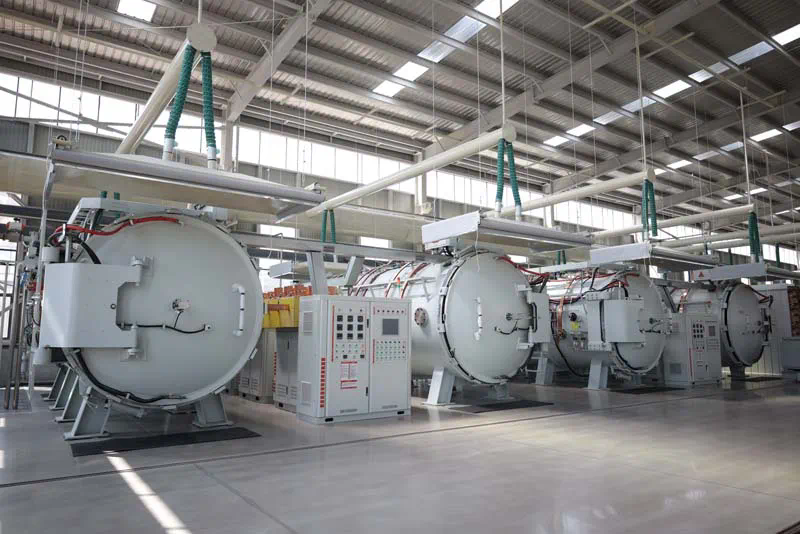Thermal Conductivity of Silicon Carbide and Heat Dissipation Solutions for Electronic Devices
Thermal management is a critical aspect of electronic device design, particularly as technology advances and devices become more compact and powerful. This article explores the properties and applications of silicon carbide (SiC) in relation to its thermal conductivity, as well as various heat dissipation solutions employed in electronic devices. Understanding these factors is essential for optimizing the performance, reliability, and longevity of modern electronic systems.
Silicon Carbide: Properties and Applications
Silicon carbide, a compound of silicon and carbon, exhibits remarkable properties that make it highly suitable for a wide range of applications, including electronics. One of its standout characteristics is its thermal conductivity, which significantly influences its performance in dissipating heat from electronic devices.
Structure and Composition
SiC exists in several crystalline forms, with the most common being hexagonal and cubic structures. The hexagonal form, also known as alpha silicon carbide (α-SiC), is thermodynamically stable at higher temperatures, while the cubic form, beta silicon carbide (β-SiC), has a higher density and exhibits better mechanical properties.
The composition of silicon carbide typically includes silicon and carbon in a 1:1 ratio, resulting in a material that combines the hardness of diamond with the strength of steel. This unique combination of properties extends to its thermal conductivity characteristics, which are crucial for its role in thermal management.
Thermal Conductivity of Silicon Carbide
The thermal conductivity formula for silicon carbide of silicon carbide is a key factor in its performance as a semiconductor material. Unlike most metals and alloys, which tend to have higher thermal conductivities, SiC offers excellent thermal conductivity combined with low thermal expansion and high mechanical strength. These properties make it ideal for applications where efficient heat dissipation is essential.
At room temperature, the thermal conductivity of silicon carbide can vary depending on factors such as crystal structure, purity, and dopant concentration. Generally, it ranges from approximately 120 W/m·K to 250 W/m·K, significantly higher than that of silicon and many other semiconductor materials.
Applications in Electronics
The superior thermal conductivity of SiC makes it particularly valuable in electronic devices where heat generation is a concern. Some key applications include:
- Power Electronics: SiC-based devices such as diodes, MOSFETs, and thyristors are used in power conversion systems where high efficiency and reduced thermal management are critical.
- RF and Microwave Devices: SiC’s thermal properties contribute to improved performance and reliability in high-frequency applications.
- Lighting: SiC-based LEDs benefit from enhanced thermal management, resulting in better luminous efficiency and longer lifespan.
- Aerospace and Automotive: In harsh environments, SiC’s thermal conductivity helps in maintaining device performance under extreme conditions.
Heat Dissipation Solutions for Electronic silicon carbide balls Devices
Efficient heat dissipation is essential to prevent electronic components from overheating, which can lead to reduced performance, reliability issues, and ultimately, failure. Various heat dissipation solutions have been developed and optimized to address the increasing thermal challenges posed by modern electronic devices.
Traditional Cooling Methods
Traditional cooling methods rely on conduction, convection, and radiation to transfer heat away from electronic components:
- Heat Sinks: Metal heat sinks with fins increase surface area for enhanced convective cooling.
- Thermal Interface Materials (TIMs): Compounds like thermal paste and pads improve thermal conductivity between the heat source and heat sink.
- Fans and Blowers: Active cooling solutions use airflow to enhance convective heat transfer.
While effective, these methods may not suffice for high-power applications or compact electronic designs where space constraints limit the effectiveness of traditional cooling solutions.
Advanced Cooling Technologies
To meet the demands of modern electronics, several advanced cooling technologies have been developed:
- Liquid Cooling Systems: Utilize liquids such as water or specialized coolants to transfer heat away from hot spots more efficiently than air-based methods.
- Phase Change Materials (PCMs): Materials that absorb and release heat during phase transitions, providing effective thermal management in compact spaces.
- Heat Pipes: Passive devices that utilize phase change principles to transport heat over long distances with minimal temperature gradients.
- Graphene-Based Materials: Graphene and graphene composites offer high thermal conductivity and lightweight properties, suitable for heat spreaders and thermal interface applications.
These advanced solutions not only improve thermal performance but also contribute to energy efficiency and device reliability, critical factors in industries ranging from consumer electronics to aerospace.
Conclusion
Effective thermal management is a cornerstone of modern electronic device design, driven by the need for higher performance, reliability, and energy efficiency. Silicon carbide, with its exceptional thermal conductivity and robust mechanical properties, plays a crucial role in enabling efficient heat dissipation in electronic devices across various industries.
As technology continues to evolve, so too will the methods and materials used to manage thermal challenges. By leveraging the unique properties of SiC and embracing advanced cooling technologies, engineers and designers can push the boundaries of electronic device performance while ensuring long-term reliability and sustainability.
For further reading on specific applications, advancements in SiC technology, or emerging trends in thermal management, explore the references and resources provided. Stay informed and inspired as we continue to innovate in the field of electronic thermal solutions.

https://supplychaininterview.com/